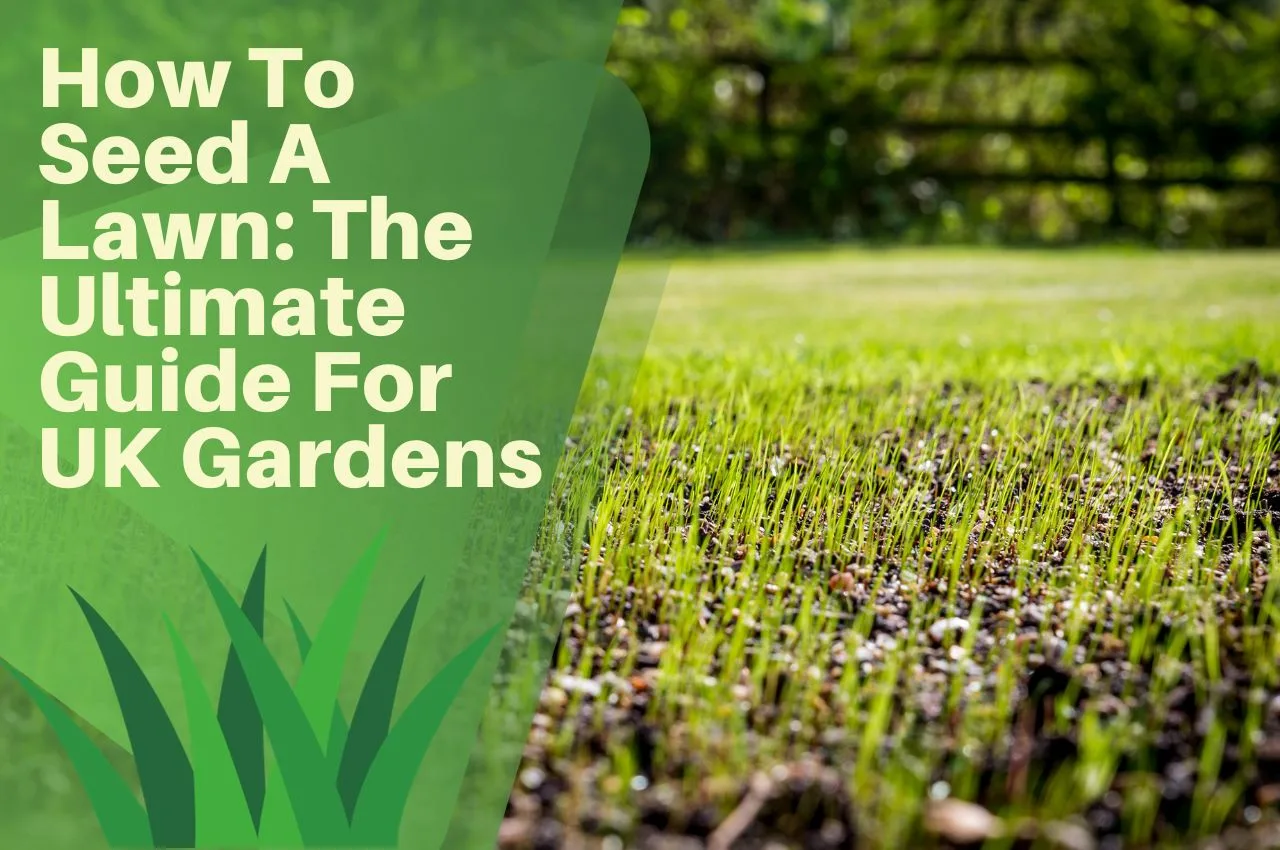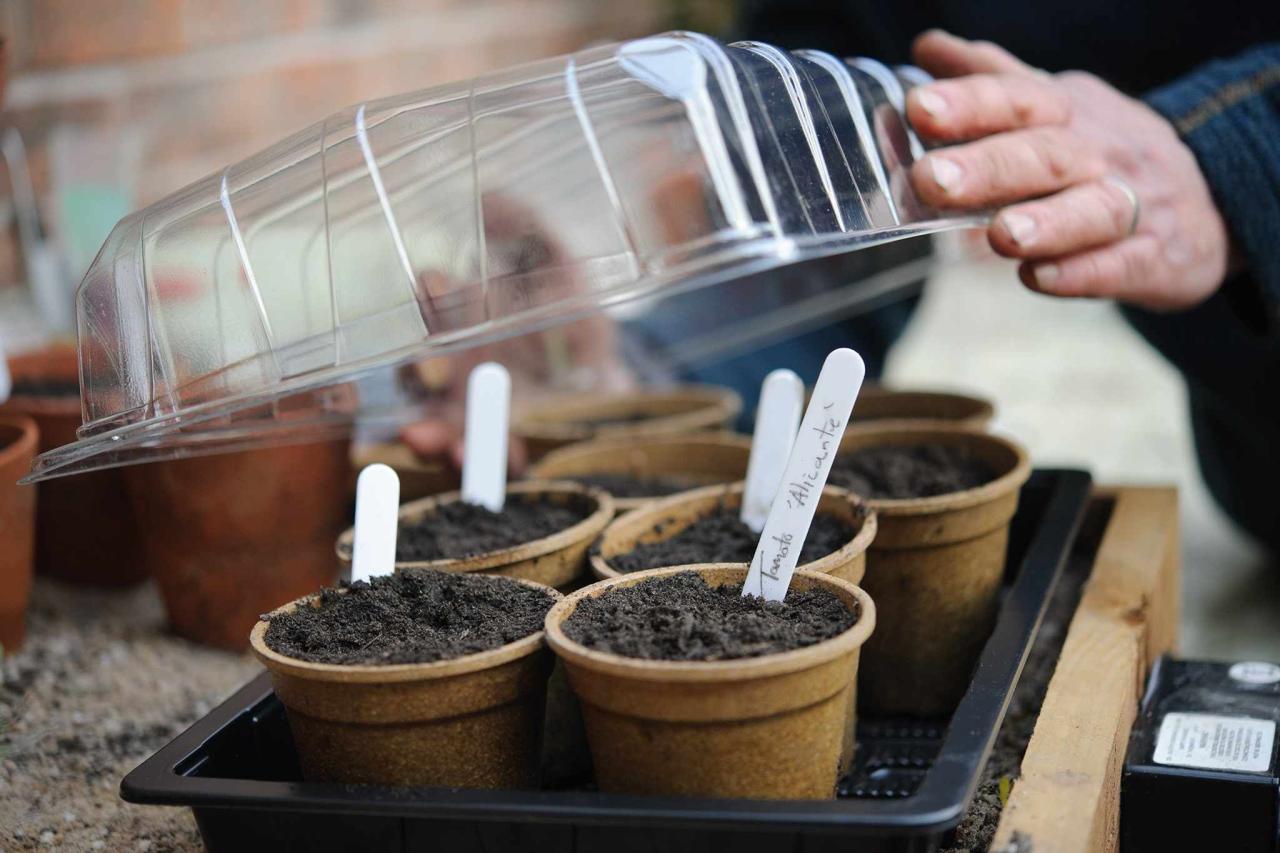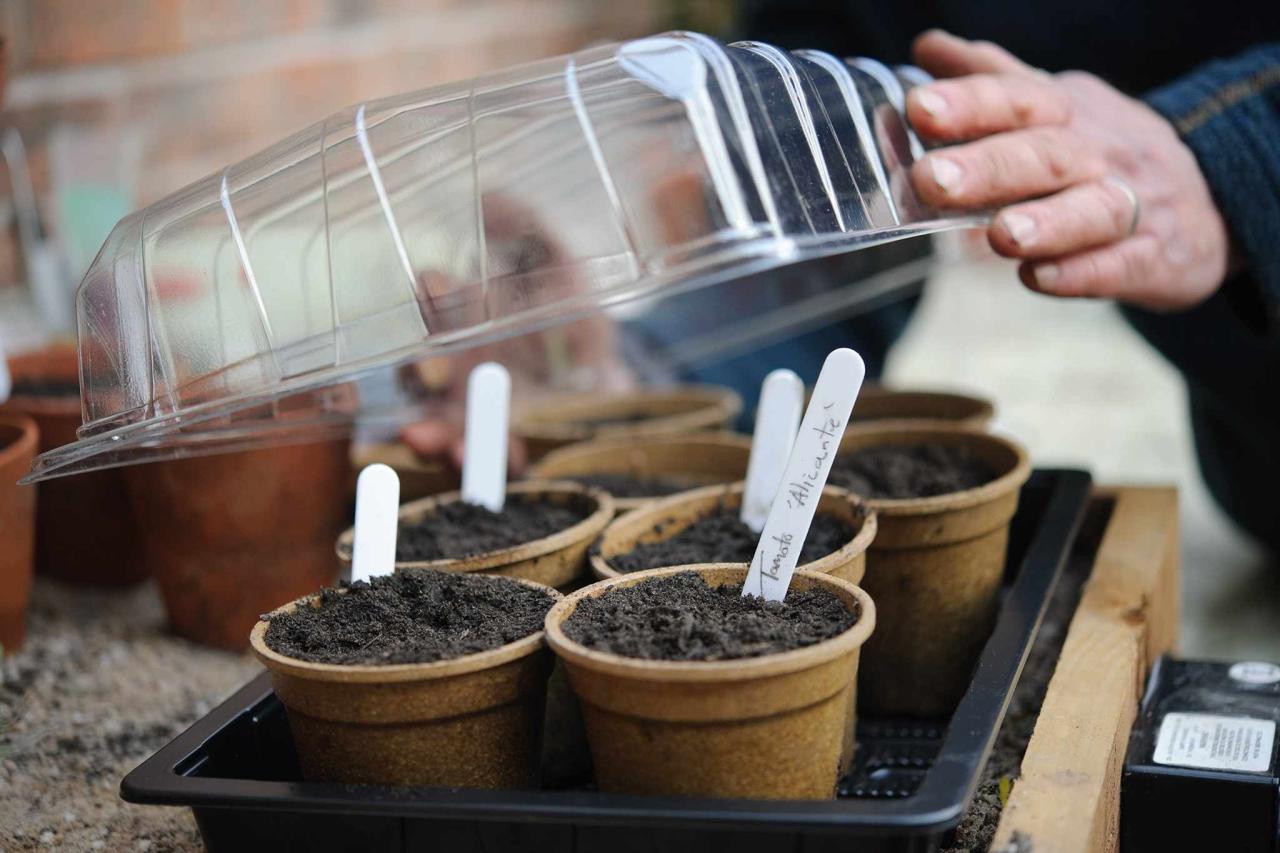The Essential Timing Tips for Sowing Grass Seed in the UK are crucial for achieving a lush, healthy lawn. Understanding the optimal sowing windows throughout the year, along with proper soil preparation, seed selection, and post-sowing care, can make a significant difference in the success of your grass-growing endeavors.
From the ideal soil conditions to the best sowing techniques, this guide provides a comprehensive overview of the essential steps to ensure a thriving lawn in the UK.
This article delves into the intricacies of establishing a successful lawn in the UK. It provides a detailed breakdown of the best time to sow grass seed, considering the unique climatic conditions of the country. From preparing the soil and choosing the right grass seed to employing effective sowing techniques and providing post-sowing care, this guide offers a comprehensive approach to achieving a vibrant and resilient lawn.
Optimal Timing for Grass Seed Sowing in the UK
Sowing grass seed at the right time is crucial for successful lawn establishment. The UK’s climate offers a variety of seasons, each with its own advantages and disadvantages for grass seed germination. Choosing the optimal time to sow depends on factors such as temperature, rainfall, and sunlight.
Ideal Sowing Windows for Different Seasons
The best time to sow grass seed in the UK varies depending on the season.
- Spring: From late March to early May, temperatures are warming, and there is ample rainfall. The soil is also warming up, providing ideal conditions for germination.
- Summer: While possible, sowing in summer (June to August) can be challenging due to high temperatures and potential drought.
- Autumn: Autumn (September to mid-November) is considered the best time to sow grass seed in the UK. Temperatures are mild, and rainfall is typically abundant, providing the necessary moisture for germination.
- Winter: Sowing in winter (December to February) is not recommended, as the cold temperatures and potential frost can hinder germination and growth.
Season |
Ideal Sowing Window |
Pros |
Cons |
|---|---|---|---|
Spring |
Late March to Early May |
Warming temperatures, ample rainfall, good soil moisture |
Can be prone to weed competition |
Summer |
June to August |
Longer daylight hours, warmer temperatures |
High temperatures, potential drought, increased weed competition |
Autumn |
September to Mid-November |
Mild temperatures, abundant rainfall, good soil moisture, reduced weed competition |
Shorter daylight hours, potential frost |
Winter |
December to February |
None |
Cold temperatures, potential frost, limited sunlight |
Preparing the Soil for Sowing
A well-prepared soil is crucial for successful grass seed germination and growth. It provides the ideal environment for roots to establish, ensuring a healthy and vigorous lawn.
Creating the Ideal Soil Conditions
The ideal soil for grass seed should be fertile, well-drained, and have a slightly acidic pH (between 6.0 and 7.0). This ensures optimal nutrient availability for healthy root development.
Preparing the Soil for Sowing
Preparing the soil involves a series of steps that create the perfect foundation for your new lawn.
Clearing Existing Vegetation
Before sowing grass seed, it’s essential to remove any existing vegetation, such as weeds, unwanted grasses, or debris. This can be done manually by hand-pulling or using a weed killer. A rotary tiller can also be used to break up the soil and remove existing vegetation.
Tilling or Raking the Soil
Tilling or raking the soil is necessary to loosen the soil, improve drainage, and incorporate any amendments. For small areas, a garden fork or rake can be used to loosen the soil. For larger areas, a rotary tiller can be used to break up the soil to a depth of 4-6 inches.
Knowing the best time to sow grass seed in the UK is crucial for a lush, healthy lawn. While the ideal time is typically spring or autumn, there are other factors to consider like soil temperature and rainfall.
If you find yourself without fresh bay leaves for your recipe, don’t worry! You can find great alternatives in How to Replace Bay Leaves in Your Recipes Without Losing Flavor. Just like with your lawn, a little planning and the right ingredients can make all the difference.
Adding Soil Amendments
Soil amendments, such as compost or fertilizer, improve the soil’s structure and nutrient content. Compost provides organic matter, which improves soil drainage, aeration, and water retention. Fertilizer provides essential nutrients like nitrogen, phosphorus, and potassium, which are vital for grass growth.
Leveling the Soil Surface
After adding amendments, level the soil surface to ensure uniform seed distribution and even growth. A rake or a garden trowel can be used to level the soil. A landscaping rake is particularly helpful for large areas, allowing for a smooth and even surface.
Choosing the Right Grass Seed
Choosing the right grass seed is crucial for establishing a healthy and thriving lawn in the UK. Different types of grass seed are suited for various purposes, from ornamental lawns to high-traffic sports fields. Understanding the characteristics of different grass varieties and selecting a mixture tailored to your specific needs will significantly impact the success of your lawn.
Factors to Consider When Choosing Grass Seed
Selecting the appropriate grass seed mixture involves considering several factors:
- Soil Type:Different grass varieties have varying tolerances for soil pH, drainage, and fertility. For example, fescue grasses are well-suited for acidic soils, while ryegrass thrives in well-drained soils.
- Climate:The UK’s climate varies significantly, with some regions experiencing colder temperatures and higher rainfall than others. Certain grass types are better adapted to specific climates. For example, perennial ryegrass is known for its fast growth and tolerance to cold weather, making it ideal for northern regions.
- Desired Appearance:The appearance of your lawn depends on the type of grass you choose. If you prefer a fine-textured lawn, consider using a mixture containing fine fescue grasses. For a more robust and durable lawn, a mixture containing perennial ryegrass or meadow grasses might be a better choice.
- Traffic Levels:If your lawn will experience high foot traffic, such as a sports field or a family lawn, selecting wear-resistant grasses is essential. Perennial ryegrass and meadow grasses are known for their durability and ability to withstand heavy foot traffic.
- Shade Tolerance:If your lawn receives limited sunlight, choosing shade-tolerant grasses is crucial. Fescue grasses, particularly fine fescue varieties, are well-suited for shady conditions.
Types of Grass Seed Available in the UK
Several types of grass seed are commonly used in the UK, each with unique characteristics:
- Perennial Ryegrass:This fast-growing grass is known for its dark green color, excellent wear resistance, and ability to withstand cold temperatures. It is often used in sports fields and high-traffic lawns.
- Fescue Grasses:Fescue grasses are a diverse group, including fine fescue, chewings fescue, and meadow fescue. They are known for their shade tolerance, drought resistance, and fine texture. Fine fescue grasses are particularly well-suited for ornamental lawns.
- Bentgrass:Bentgrass is known for its fine texture and ability to withstand low mowing heights. It is commonly used on golf courses and putting greens.
- Meadow Grasses:Meadow grasses, such as red fescue and tall fescue, are known for their durability and ability to withstand heavy foot traffic. They are often used in sports fields and high-traffic lawns.
Comparing Different Grass Seed Varieties
Grass Variety |
Growth Rate |
Drought Tolerance |
Wear Resistance |
Shade Tolerance |
|---|---|---|---|---|
Perennial Ryegrass |
Fast |
Moderate |
High |
Moderate |
Fine Fescue |
Slow |
High |
Moderate |
High |
Chewings Fescue |
Moderate |
High |
Moderate |
High |
Meadow Fescue |
Moderate |
High |
High |
Moderate |
Bentgrass |
Moderate |
Moderate |
Moderate |
Moderate |
Sowing Techniques for Success

Once you have prepared your soil and chosen the right grass seed, it’s time to sow. The technique you choose will depend on the size of your lawn and your personal preference. Here, we’ll explore three common methods: broadcasting, drilling, and using a spreader.
Broadcasting
Broadcasting is the simplest and most common method of sowing grass seed. It involves scattering the seed evenly over the prepared soil. This technique is suitable for smaller lawns and can be done by hand. Here’s a step-by-step guide:
- Divide the seed into two portions: This ensures a more even distribution.
- Walk across the lawn in a criss-cross pattern: This helps ensure that the seed is evenly spread across the entire area.
- Lightly rake the seed into the soil: This helps to cover the seed and protect it from birds and the elements. Rake gently to avoid disturbing the soil too much.
- Water the seed thoroughly: This will help the seed germinate and establish roots.
Drilling
Drilling is a more precise method of sowing grass seed. It involves using a drill to create small holes in the soil and then dropping a single seed into each hole. This technique is best suited for larger lawns and can be done with a hand-held drill or a mechanical drill.
Here’s a step-by-step guide:
- Mark out rows across the lawn: Use a string or a garden hose to create straight lines for drilling.
- Drill holes in the soil: Space the holes 6-8 inches apart and ensure they are deep enough to cover the seed.
- Drop a single seed into each hole: This ensures a consistent density of grass.
- Cover the holes with soil: Use your hands or a rake to gently cover the holes.
- Water the seed thoroughly: This will help the seed germinate and establish roots.
Using a Spreader, The Essential Timing Tips for Sowing Grass Seed in the UK
A spreader is a tool that allows you to evenly distribute grass seed over a large area. It’s a good option for larger lawns and can be used for both broadcasting and drilling. Here’s a step-by-step guide for using a spreader:
- Read the instructions for your spreader: Different spreaders have different settings and require different amounts of seed.
- Fill the spreader with the correct amount of seed: Be sure to follow the manufacturer’s instructions for the seed-to-spread ratio.
- Walk across the lawn in a criss-cross pattern: This helps ensure that the seed is evenly spread across the entire area.
- Overlap each pass by about 50%: This helps to ensure that the seed is evenly distributed and that there are no gaps.
- Lightly rake the seed into the soil: This helps to cover the seed and protect it from birds and the elements.
- Water the seed thoroughly: This will help the seed germinate and establish roots.
Watering After Sowing
Watering the seed after sowing is crucial for germination and root establishment. It’s important to water deeply and frequently, but not so much that you create puddles. Here are some watering recommendations:
- Water the seed immediately after sowing: This will help to settle the seed and promote germination.
- Water the seed twice a day for the first week: This will help to keep the soil moist and encourage germination.
- Reduce watering frequency to once a day after the first week: By this time, the grass seedlings should have established roots and be able to absorb moisture from the soil more efficiently.
- Continue watering regularly for the first few weeks: This will help the grass to establish a strong root system and prevent it from drying out.
Post-Sowing Care and Maintenance: The Essential Timing Tips For Sowing Grass Seed In The UK
After you’ve sown your grass seed, the work isn’t over. Proper post-sowing care is crucial for ensuring a healthy and vibrant lawn. It’s a bit like nurturing a newborn – you need to provide the right conditions for growth and protect it from harm.
Consistent Watering
Consistent watering is the cornerstone of successful grass establishment. Newly sown seeds need moisture to germinate and develop strong roots. A dry spell can quickly kill off seedlings before they have a chance to take hold. The ideal watering routine involves light but frequent watering, aiming to keep the soil consistently moist but not waterlogged.
Avoid heavy watering that can wash away seeds or compact the soil.
Benefits of Mulch
Applying a light layer of mulch after sowing provides several benefits. It helps retain moisture in the soil, preventing rapid evaporation. The mulch acts as a protective barrier, shielding the delicate seedlings from harsh sunlight and wind. Additionally, it helps suppress weed growth, giving your grass a better chance to establish itself.
Organic mulches like straw or compost are preferred as they decompose over time, adding nutrients to the soil.
Preventing Weed Growth
Weeds are a common challenge when establishing a new lawn. They compete with grass seedlings for nutrients, light, and water. Pre-emergent herbicides, applied before the weeds germinate, can help prevent their emergence. Alternatively, hand-weeding is an effective method for removing weeds in smaller areas.
It’s important to remove weeds promptly before they become established and spread.
Fertilization
During the establishment phase, the young grass plants need a boost of nutrients to support their growth. Applying a balanced fertilizer, specifically formulated for new lawns, can provide the necessary nutrients for healthy development. Follow the manufacturer’s instructions for application rates and frequency.
Avoid over-fertilizing, as it can damage the seedlings.
Knowing the optimal time to sow grass seed in the UK is crucial for a healthy, thriving lawn. Just like understanding the best ingredients for a delicious dish, timing is everything. If you’re looking for a substitute for that classic bay leaf flavor, check out How to Cook Deliciously Without Bay Leaves Using These Alternatives for some creative alternatives.
Back to the lawn, the ideal window for sowing grass seed in the UK is typically from late spring to early autumn, when the soil is warm and moist, but not too hot.
Post-Sowing Care Checklist
Here’s a checklist of post-sowing care tasks and their approximate timing:
- Water regularly:Every day for the first few weeks, then gradually reduce frequency as the grass establishes.
- Apply mulch:Immediately after sowing, use a light layer of straw or compost.
- Hand-weed or apply pre-emergent herbicide:As needed to control weed growth.
- Fertilize:Apply a balanced fertilizer formulated for new lawns, typically 4-6 weeks after sowing.
- Mow:Once the grass reaches a height of 3-4 inches, mow at a higher setting to encourage deeper roots.
Outcome Summary

Sowing grass seed in the UK is a rewarding endeavor, but it requires careful planning and execution. By understanding the optimal timing for sowing, preparing the soil appropriately, selecting the right seed, and providing proper post-sowing care, you can increase your chances of success.
From the first step of choosing the right seed to the final touch of maintaining a consistent watering routine, each step plays a crucial role in cultivating a beautiful and healthy lawn.
General Inquiries
What are the best types of grass seed for shady areas in the UK?
For shady areas, consider using a blend that includes shade-tolerant grasses like fescue or perennial ryegrass. These varieties can tolerate lower light conditions and still maintain a healthy appearance.
Can I sow grass seed in the winter?
While it’s not ideal, you can sow grass seed in the winter if you live in a milder region of the UK. However, germination and establishment will be slower, and you’ll need to protect the seedlings from frost.
How often should I water newly sown grass seed?
Newly sown grass seed needs to be kept consistently moist. Water deeply and frequently, aiming for a light misting rather than heavy soaking. The frequency will depend on the weather, but generally, watering 2-3 times a day is recommended.
What is the best way to prevent weeds from growing in my new lawn?
To prevent weed growth, consider using a pre-emergent herbicide before sowing the seed. This will prevent weed seeds from germinating. You can also hand-pull weeds that emerge after sowing.
